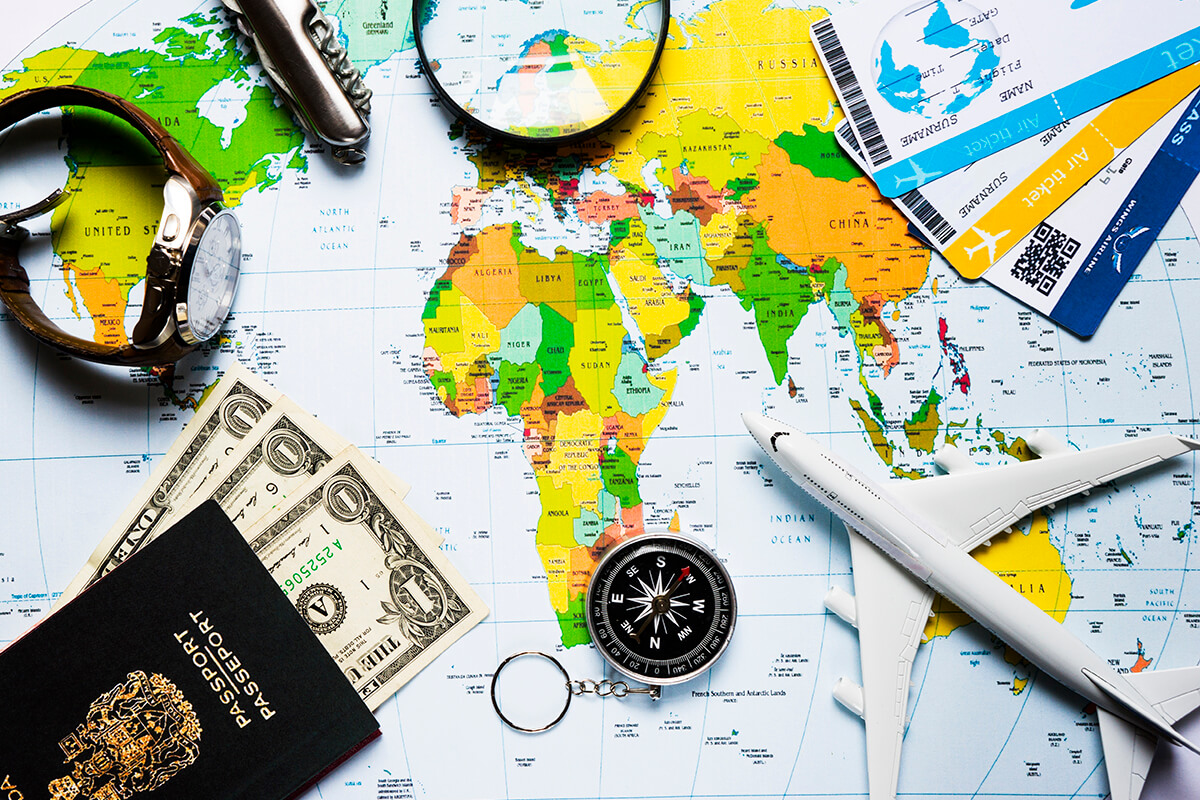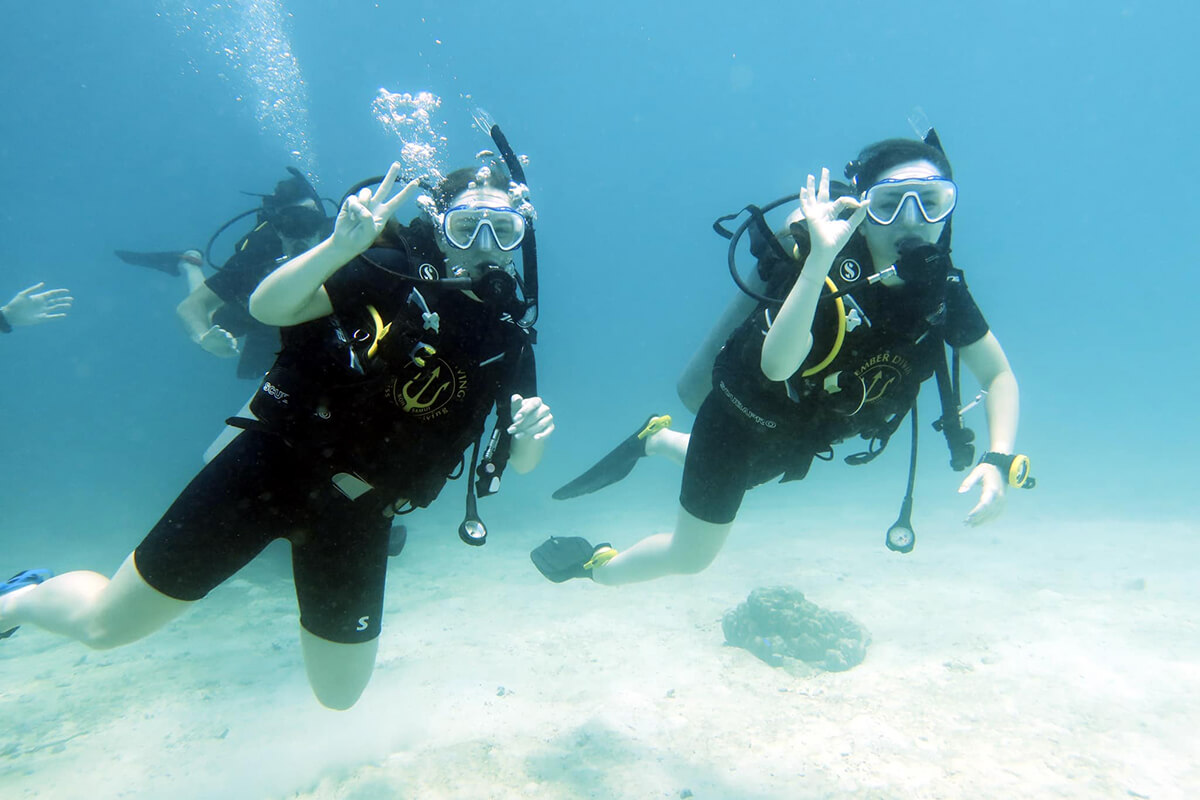Koh Samui, Thailand, is a prized tourist destination thanks to its beautiful beaches, abundant marine life, and verdant landscape. However, if you want to make the most of your time there, particularly if you plan on engaging in water-based activities like scuba diving or snorkeling, the timing of your visit is crucial. Focusing on weather patterns—especially the monsoon season—and the greatest conditions for diving, this blog explores the best times to visit Koh Samui.

How to “Read the Clouds” on Koh Samui
Thailand’s tropical paradise of Koh Samui has its own unique weather patterns that affect the best times to visit and enjoy the outdoors. The island’s climate is divided into three seasons: dry, hot, and monsoon, with each delivering a distinct experience.
From December to February, we experience the dry season, which is characterized by mild winds and almost little precipitation. During this season, the weather is ideal for enjoying the island’s natural beauty and participating in beach activities and water sports. Conditions for scuba diving and snorkeling are ideal, with calm seas and good visibility.
From March through August, the island experiences its warmest temperatures and highest humidity levels of the year. There is still a good amount of sunshine during this time of year, but it is not uncommon to get brief but powerful rains, especially in the late afternoon or evening. The warmer seas during this period attract a different assortment of marine species, making it an intriguing time for diving enthusiasts.
From September to November, the monsoon season brings more intense and more regular downpours. Traveling during this time of year is riskiest because of the extreme daily temperature and precipitation swings. While the rainy season may deter some tourists, it also turns the island into a verdant haven where visitors can find peace and quiet away from the crowds.
If you want to make the most of your time on Koh Samui, from lazing on its sun-kissed beaches to discovering its underwater treasures, you’ll need to be aware of the island’s weather patterns.

Scuba Diving and Snorkeling in Koh Samui
Koh Samui, a paradise for underwater explorers, offers exceptional scuba diving and snorkeling experiences, particularly during the dry season. From December to February, the island’s waters are at their clearest, with visibility often extending beyond 30 meters. This clarity unveils a vibrant underwater world, rich in coral reefs and teeming with diverse marine life, making it an ideal time for both beginners and seasoned divers.
As the season transitions to the hotter months, from March to August, the waters remain inviting for snorkelers and divers. The slight increase in water temperature during this period attracts a different array of marine species, including the majestic whale sharks, especially around renowned dive sites like Chumphon Pinnacle.
However, during the monsoon season, from September to November, diving conditions become more challenging due to decreased visibility and rougher seas. While this may deter novice divers and snorkelers, some experienced divers find this time intriguing, as it brings unique marine life closer to the shores, offering a different perspective of Koh Samui’s underwater ecosystem.
In summary, while the dry and hot seasons are preferable for diving and snorkeling in Koh Samui, the monsoon season also holds its unique appeal for experienced divers seeking a different kind of underwater adventure.

Tips for Organizing the Trip to Koh Samui
Timing is everything when organizing a trip to Koh Samui. Pick the dry season if you want to go swimming and scuba diving, the hot season if you want to see a wide variety of marine life, and the monsoon season if you want peace and quiet and lower prices. Koh Samui changes dramatically throughout the year, so timing your trip to coincide with your interests is essential.
There are a number of convenient ways to reach Koh Samui. The quickest and easiest option is to fly to Samui Airport, which has connections to other major towns in Thailand and even some international locations. The bulk of flights to this boutique airport are provided by Bangkok Airways, which provides a smooth link from Bangkok, Phuket, and other regional destinations.
Direct flights to Koh Samui from international carriers like Swiss, Lufthansa, Thai Airways, and Emirates connect in Bangkok (BKK).
Fly to the mainland city of Surat Thani and then take a ferry to Koh Samui for a cheaper alternative. While this route may include more travel time, it also provides a picturesque entrance to the island by way of the stunning Gulf of Thailand.
Once you get on the island, you may easily get around on taxis, rented motorcycles, or shared pick-up vehicles called songthaews. Each provides a distinctive perspective from which to experience the island’s contrasting landscapes, from lively seaside communities to quiet alpine peaks.
If you want your stay on Koh Samui to go off without a hitch, especially during peak travel times, it’s a good idea to book your accommodations and internal transportation in advance.
Conclusion
Koh Samui is a year-round destination, each season offering a unique charm. Whether it’s basking in the dry season’s perfect beach weather, exploring marine life in the hot season, or embracing the tranquil monsoon period, there’s always something special about this island. By understanding the seasonal dynamics, you can plan an unforgettable Koh Samui adventure that aligns with your interests, whether it’s diving, snorkeling, or simply soaking in the island’s natural beauty.





